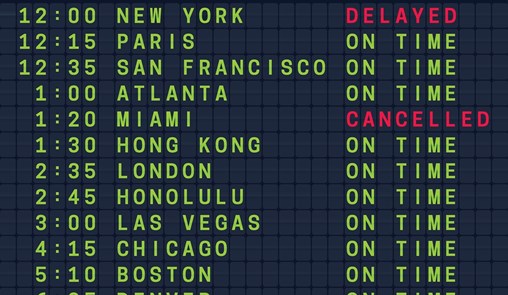A significant portion of judicial review litigation focuses on the content of the statement of reasons provided by a decision-maker. The parties pore over the detail, wrestle with the nuance and pace the tick-tock of the logic in an effort to identify, or explain away – as the case may be – the inference of a legal error in the decision that is subject to review.
But, and here is where things get slightly meta, the statement of reasons for a decision is not the decision. Certainly, they are linked, inarguably so. In a given circumstance, the statement of reasons illustrates the rationale adopted by a decision-maker and is often the best evidence of the facts on which the claim for relief is founded. Nonetheless, the distinction exists and, as law is wont to do, principles have developed regarding the status and interpretation of such reasons.
In this newsletter special counsel and accredited specialist in administrative law Alistair Bridges twitters on about two recent decisions of the Federal Court of Australia that illustrate these principles. The first of these deals with an appeal of a freedom of information decision, the second relates X Corp’s successful challenge to an interim injunction. So snap to it, chatting about law commences now.
Coherence not guaranteed
The basic approach a court will take to interpreting a statement of reasons is illustrated in Walker Group Holdings Pty Ltd v Secretary, Department of Climate Change, Energy, the Environment and Water.[1] This was an appeal of a decision by the Administrative Appeals Tribunal (“AAT”). In considering the application for review, the judge, Wigney J, characterised aspects of the AAT’s reasons for its decision as not being “entirely coherent or convincing” and appearing to “involve an element of circularity.”[2]
The relevant AAT decision was the review of a decision made by the Department of Climate Change, Energy, the Environment and Water (“the Department”) under the Freedom of Information Act 1982 (“FOI Act”) to allow the Australian Conservation Foundation Incorporated access to documents relating to a proposed development by Walker Group Holdings Pty Ltd (“Walker”) at Toondah Habour, in Queensland. Walker disagreed that access should be given to the documents and so sought review by the AAT and then appealed the outcome of that to the Federal Court of Australia.
A number of grounds for review were put forward – the most relevant for our purposes is the fourth, being that the AAT made an error of law by failing to undertake the assessment required under s 47G(1)(b) of the FOI Act. This section conditionally exempts documents from disclosure where they contain certain business, commercial or financial information, and where the disclosure of that information
…could reasonably be expected to prejudice the future supply of information to the Commonwealth or an agency for the purpose of the administration of a law of the Commonwealth or of a Territory or the administration of matters administered by an agency.
According to excerpts of the AAT decision that appear in the judgment, the reasoning adopted by the Tribunal in determining the documents were not conditionally exempt under this section was “a developer like Walker should expect the FOI Act to apply, with the consequence that, if disclosure occurs under the FOI Act, that is part of what must reasonably be expected to occur”. Walker’s argument appears to have been that this reasoning was circular, because a developer may equally expect that information it supplied may be exempted from disclosure under s 47G(1)(b). So, Walker reasoned, the Tribunal failed to undertake the assessment required by s 47G(1)(b).
Despite the above noted reservations regarding the coherence and convincingness of the Tribunal’s reasons, Wigney J concluded that it was “tolerably clear” that the Tribunal had undertaken the assessment required under s 47G(1)(b). His Honour was able to do so, having regard to the judgment in Minister for Immigration and Ethnic Affairs v Wu Shan Liang (1996) 185 CLR 259, which is to the effect that a decision should be read fairly and without an “eye keenly attuned to the perception of error”. There are related judgements to the effect that tribunal decisions should be read fairly and not in an unduly critical manner.[3] In essence, the Court will not scrutinise the language too closely, but will look instead at the entire statement of reasons and discern what it reveals about what the decision-maker did. The Tribunal had applied, and made findings in relation to, s 47G(1)(b); the deficiencies in the statement of reasons did not evidence a legal error in that application of the FOI Act.
This is not to say that errors cannot be discerned from a statement of reasons – it can and does happen. Courts need to be attuned to an absence of reasons, or reasons devoid of any consideration of a submission central to a party’s case.[4] Similarly, does the decision lack an “intelligible justification” rendering it legally unreasonable? The key consideration is how do the deficiencies in the reasons illustrate the existence of a legal error?
Not all reasons are equal
Another wrinkle to this is that not all statements of reason are alike.
There is no general rule of common law that requires a decision-maker to provide the reasons for their decision. Courts have allowed that the requirement may arise in “special” or exceptional circumstances, but, more commonly, the requirement arises under legislation. For example, s 13 of the Administrative Decisions (Judicial Review) Act 1977 (“ADJR Act”) and s 28 of the Administrative Appeals Tribunal Act 1975 (“AAT Act”) create mechanisms whereby some parties may seek reasons for particular decisions. In such a case, the content of the reasons will generally be defined by that legislation. The provenance of the reasons has an effect all of its own.
As an example, take the recent judgment in eSafety Commissioner v X Corp [2024] FCA 449. This proceeding related to a removal notice issued by the eSafety Commissioner (“the Commissioner”) under s 109 of the Online Safety Act 2021. Specifically, that noticed required the removal of a video of the attack on Bishop Mar Mari Emanuel from various social media services. The Commissioner formed the view that X Corp had not complied with that notice, and commenced a proceeding before the Federal Court of Australia seeking orders related to that non-compliance. The Commissioner also sought, and was granted, an interim injunction requiring X Corp to hide the video. On 10 May 2024, the matter was listed for further hearing to determine whether the interim injunction should be extended.
A key issue in that further hearing was the prima facie validity of the removal notice. Kennett J proceeded on basis that the removal notice was valid unless the evidence disclosed a substantial basis for doubting that its validity will be established at trial. The only evidence before the Court regarding the Commissioner’s reasons for issuing the notice was a statement issued by the Commissioner in response to a request from X Corp (“the decision record”).
To issue the removal notice, the Commissioner had to be satisfied that the video was “class 1 material”. The decision record revealed the reason for determining the video was class 1 material was that, if it were to be classified under the Classification (Publications, Films and Computers Games) Act 1995 (“the Classification Act”), it would likely be classified as “refused classification”. However, the decision record did not provide any particulars as to how that conclusion was reached.
In certain instances, an inference may be drawn that a failure to mention a matter in the written reasons evidences a failure by the decision-maker to consider that matters.[5] However such silence is, on its own, only meaningful where it appears a statement is intended to be comprehensive. For example, a statement prepared under the s 13 of the ADJR Act is required to set out the findings on material questions of fact, refer to the evidence or other material on which those findings were based and, finally, give the reasons for the decision. This formulation is commonly adopted in legislation – see for example, s 28 of the AAT Act, and may be implied into other legislative reason-giving requirements via the Acts Interpretation Act 1901. A statement of reasons meeting this formulation is a comprehensive record of the reasons for the decision.
The Commissioner’s decision record was explicitly not provided under any legislative power. It did refer to the Classification Act but not the instruments pursuant to which a classification was made and did not provide any details of the reasoning process used by the Commissioner. Nonetheless, because of the nature of the decision record, Kennett J would not infer that no such reasoning took place.
Accordingly, Kennett J was not satisfied that the removal notice was, in itself, invalid. Ultimately, Kennett J did consider that, at least prima facie, the Commissioner would not succeed in establishing non-compliance with the removal notice, and so refused the application to extend the interim injunction. Nonetheless, the provenance of the statement of reasons is always needs to be considered when basing arguments on its content.
Don’t be afraid of the complexity
Administrative law is complex. For some, delightfully so; for others infuriatingly. But it is of fundamental importance to the Australia’s legal system; it delineates the boundaries on the legitimate use of government power. If you need assistance in determining whether a decision that has affected you has been correctly made, that complexity can be your friend.
If you have any questions about administrative law, please contact our Public and Administrative Law team.
[1] [2024] FCA 504
[2] Para 12.
[3] BVD17 v Minister for Immigration and Border Protection (2019) 268 CLR 29
[4] Soliman v University of Technology, Sydney and Another (2012) 207 FCR 277;
[5] Minister for Immigration and Multicultural Affairs v Yusuf (2001) 206 CLR 323
This memo presents an overview and commentary of the subject matter. It is not provided in the context of a solicitor-client relationship and no duty of care is assumed or accepted. It does not constitute legal advice.
© Moulis Legal 2024








